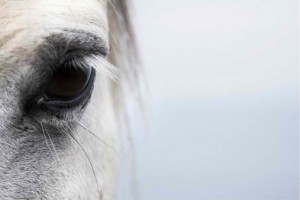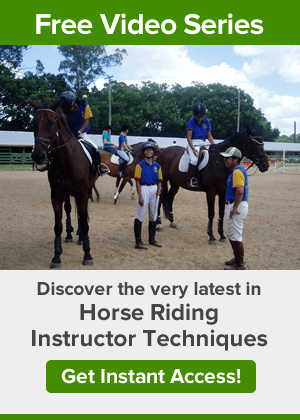 It takes time and experience to develop your sense of vision around horses. There is an old saying…
It takes time and experience to develop your sense of vision around horses. There is an old saying…
“The eye of the master makes the horse fat”.
Put simply, the ‘master’ was and experienced knowledgeable horseperson. An experienced horse person can walk into a stable and in a second and know that a horse is too thin, too fat, lame, sick aggressive or sour as well as many other aspects of the horse’s health and personality.
An experienced instructor will pick up wrong canter leads and incorrect diagonals in a flash while they are teaching a group of riders. At the same time they will be giving individual instruction to each of the riders to improve their skills. As the riders improve their skills the horses will be working happier and more correctly the longer the experienced instructor is teaching the group. The horses will continue to improve in education even though the experienced instructor may not ride them.
When beginner instructors start teaching it may take a while to build up these skills. First of all they need the confidence to go and take control of a group or even an individual rider who may be older and possibly more experienced than them.
They may not ‘see’ the diagonals, canter leads or some basic rider position faults. If you are teaching horse riding instructors to develop their eye or learning to develop your eye for these faults, the instructions below may help
Diagonals
First make sure that the rider is riding the horse in a regular rhythm in the trot. It is difficult if the horse is continually breaking gait, running on or has an inconsistent rhythm.
Then look at when the rider’s seat hits the saddle. Say ‘down’, ‘down’, ‘down’ consistently each time you see the seat and the saddle connect so that you feel the same rhythm yourself. It is interesting that often the beginner horse riding instructor will ‘nod’ their head at the same time the rider’s seat touches the saddle. If this happens, you know that they have the rhythm firmly established.
Then keeping the same rhythm, watch the inside hind leg and establish the same rhythm saying ‘down’, ‘down’, ‘down’ at the same time.
To confirm that you have the same beat and that the rider is sitting at the same time the inside hind leg is touching the ground; you should be easily to swap your vision between the two. If you do this last step correctly you will soon be able to see the complete picture and easily notice if someone is on the incorrect diagonal.
Canter Leads
The easiest way to start to develop you ‘eye’ for canter leads is to look at the leading leg. This is the front leg that touches the ground last in canter. Because it is the final beat and touches the ground last ,it lands in front of the other legs during the canter stride.
At this stage, look for the inside front leg to be on the inside of the circle.
Once you have established that the horse is on the correct leading leg then look at the hind legs. The inside hind leg lands after the outside hind and it should also be in front.
As you develop your eye you should also make sure the horse has three clear, correct beats (outside hind, inside hind and outside fore together then the inside fore).
Position Corrections
Before you look at the rider you are teaching you should have a very clear picture/ video in your mind of a rider who is in the correct position.
Then almost ‘paste’ it over your rider to see where the differences are. The lower leg may be too far forward which results in the rider having difficulty balancing in some paces. The hands may be moving up and down while the rider is in rising trot, or the rider may rock backwards and forwards in the canter.
Work out where the differences are and make the corrections. Usually start with the seat, then the lower legs, then the body and then the hands.

